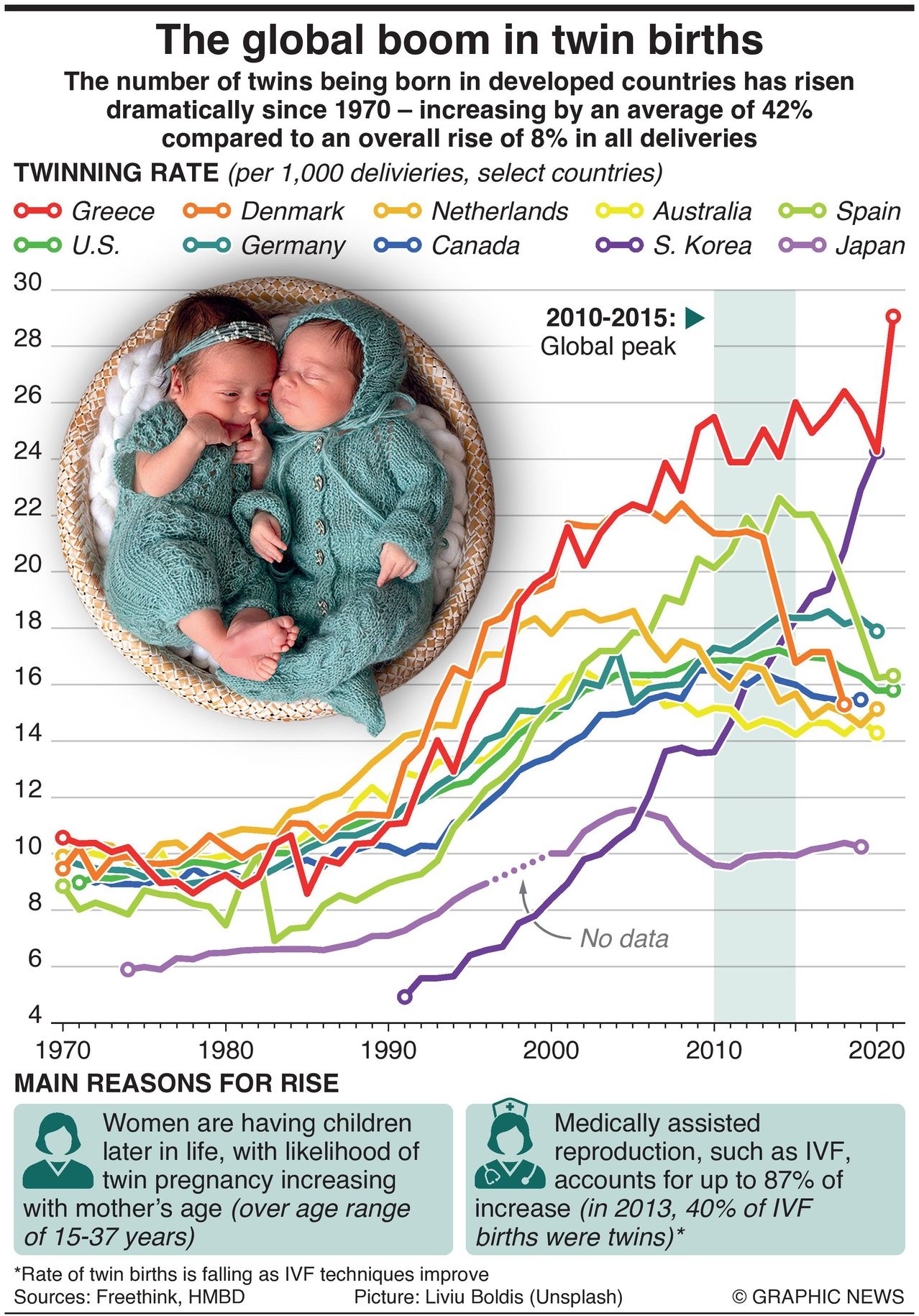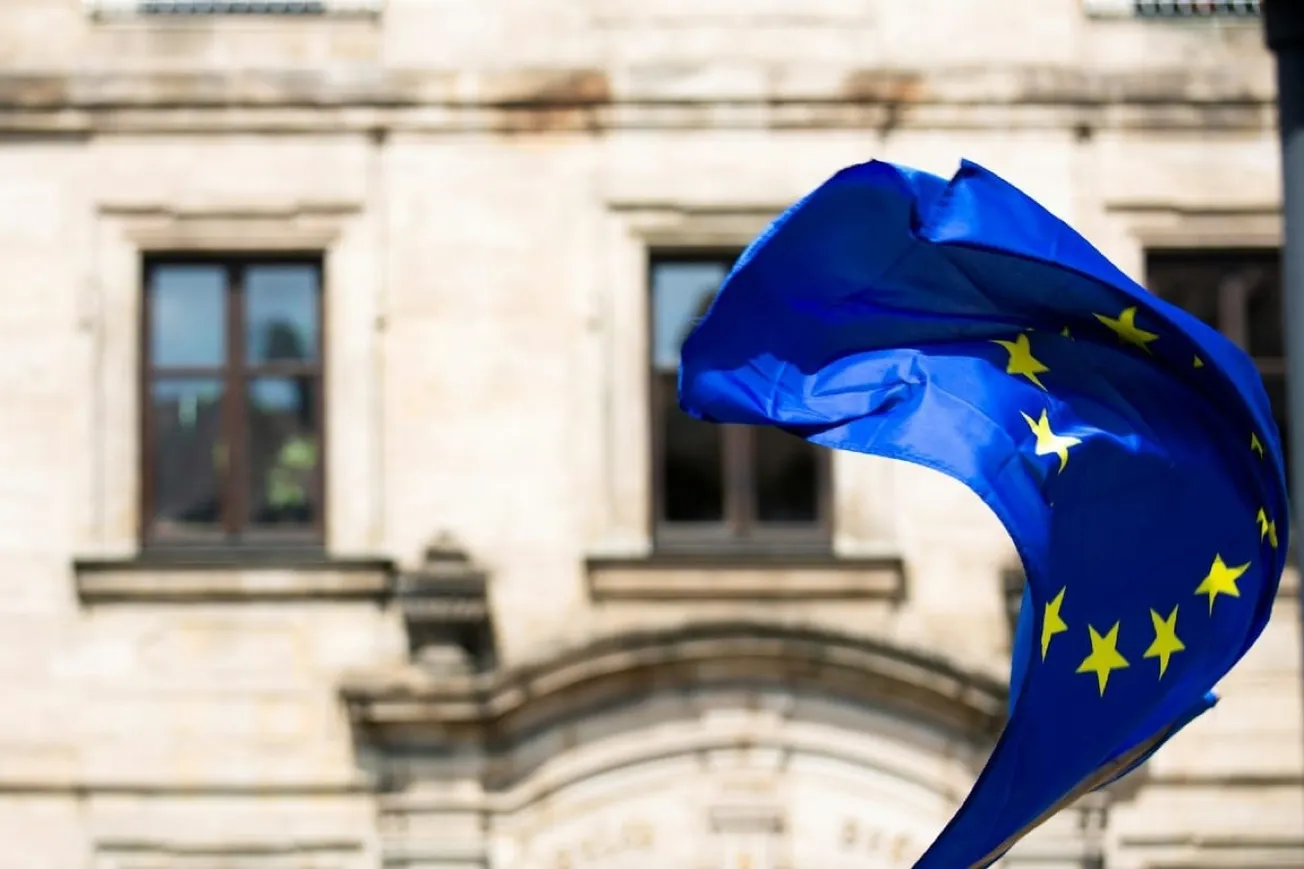The number of twins being born in developed countries has risen dramatically since 1970 – increasing by an average of 42% compared to an overall rise of 8% in all deliveries.

There has been a startling rise in the number of twins being born – increasing dramatically in nearly all developed countries since 1970.
Data from The Human Multiple Births Database (HMBD), which documents as reliably as possible twin birth rates around the world, shows that from the mid-1970s, rates of twin births almost doubled in many countries – peaking between 2010 and 2015.
To put it succinctly, while there has been an 8% increase in all deliveries worldwide, there has been a 42% increase in twins.
The main factors for the rise are twofold:
Firstly, women are having children later in life as they pursue careers. In Italy and Sweden for example, the average age of first-time mothers is now 32. And as the HMBD notes, the likelihood of twin pregnancy increases with a mother’s age (over the range of 15-37 years).
Secondly, and the largest contributor to the rise, is Medically Assisted Reproduction (MAR), most commonly by In Vitro Fertilisation (IVF), which accounts for 87% of the increase. In 2013, 40% of IVF pregnancies resulted in twins, compared with just 2% in the general population.
The increase in twinning rates has raised concerns among governments and medical authorities because twins tend to have frailer health than singletons – often being born prematurely with lower birth weights that can complicate deliveries and lead to long-term health problems.
However, HMBD believes the peak in 2013 is a sign that over the last few years, MAR techniques have improved, with the rates of multiple births dropping considerably due to changes in laws that reduce the the mean number of embryos allowed to be transferred.
Data from the UK shows that the chance of having twins with IVF (in mothers under 35) was 27% in 2007. Today, it’s 6%.
Twin births have historically been rare occurrences, and it would appear they will return to being so.









